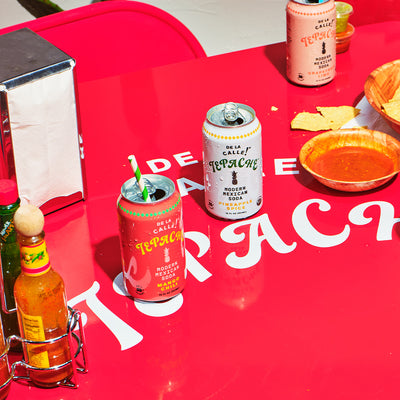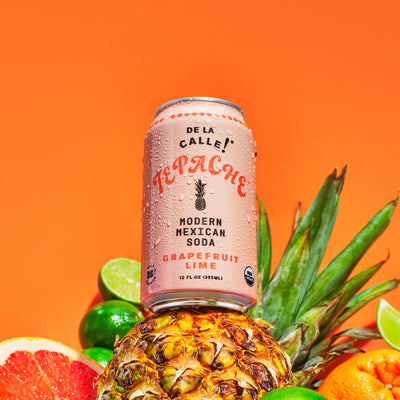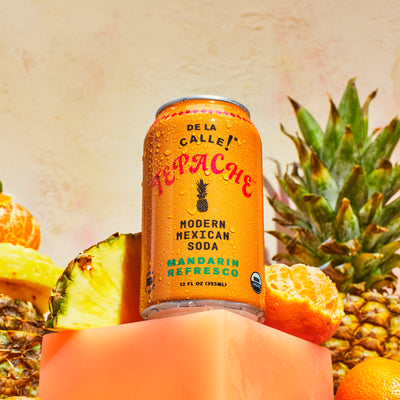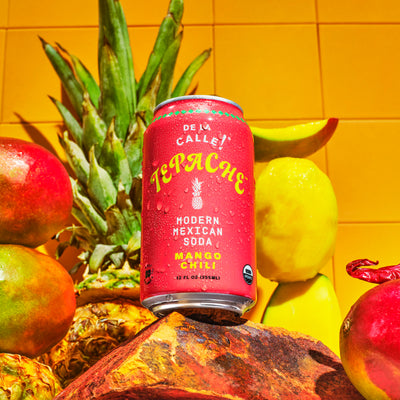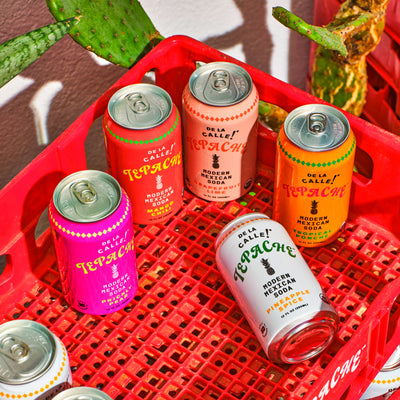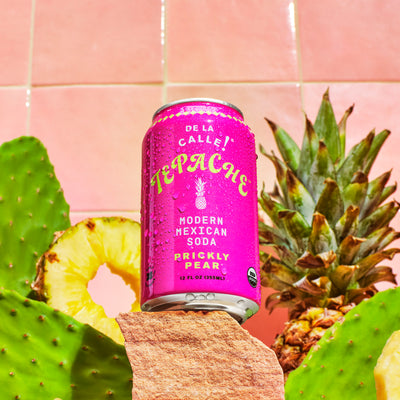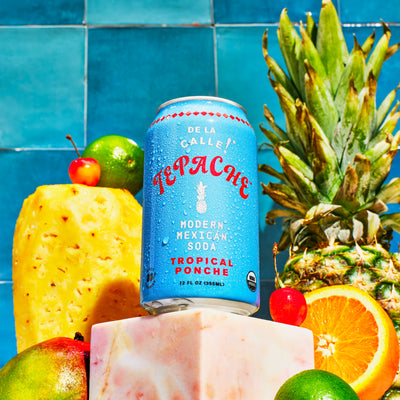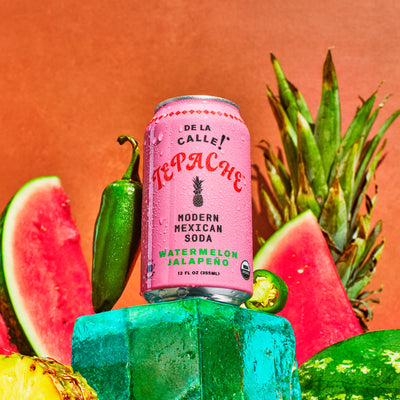What Are Antojitos?

In this article, we’ll tell you everything you need to know about antojitos, Mexico’s famous street snacks.
Overview
There’s no direct English translation of antojito, but it is roughly translated as “little cravings,” “yummy bites,” “tasty snack cravings,” and “something to hold you over until your next meal.” Antojitos are sold on the street and can be prepared and eaten quickly. Essentially, antojitos are appetizers you can buy on the street. They’re also often eaten late at night after a few drinks or a meal out.
It’s thought that the rise of food truck culture in the US is a direct result of antojitos culture in Mexico, where street food has a long history and has been a part of people’s daily lives for many years. Although you might not know it, several of the most foods are actually antojitos. Just like with all other foods in Mexico, there are different regional variations. However, some antojitos are popular everywhere.
Popular Antojitos
In this section, we’ll take a look at some of the most popular antojitos, so you know just what to order next time you’re roaming the streets of Mexico.
Tacos
Arguably the most famous antojito in both Mexico and the United States is the taco. Tacos are usually made from corn tortillas but can sometimes be made with flour tortillas, especially in northern Mexico. Once the tortilla is made, tacos are filled with every meat imaginable, from pork (tacos al pastor or carnitas tacos), beef (tacos de carne asada), and chicken (tacos de pollo).
On the coast, you can fish and shrimp tacos as well. If you’re feeling really indulgent, try a taco dorado. These tacos have been deep-fried and are served golden and crispy.
Tamales
As one of the oldest Mexican foods, dating back as early as 8000 to 5000 B.C., the tamale is a staple of the antojitos world. Tamales are made from masa (the corn dough used to make tortillas) that is mixed with lard and water or stock. From there, the “dough” is then filled with meat, vegetables, or cheese. After the filling is prepared, it is placed in a corn husk and steamed. In some regions like Oaxaca and the Yucatán Peninsula, tamales are steamed in banana and plantain leaves rather than corn husks.
The classic tamale is filled with one or more of the following fillings: pork, chicken, jalapenos, beef, chili sauce, onion, and garlic. Although this is the classic preparation, tamales can be sweet, spicy, or savory, depending on the preparation style.
Chilaquiles
Chilaquiles is often served for breakfast and has all the makings of a perfect Mexican dish: tortillas, salsa, and cheese. The word chilaquiles is derived from the Nahuatl words for chilis and greens. The most basic chilaquiles consist of fried corn tortilla chips simmering in a brothy sauce. From there, you can add salsa, shredded chicken, cheese, and eggs if you’re eating chilaquiles for breakfast.
There are two main varieties of chilaquiles: chilaquiles verdes and chilaquiles rojos. Chilaquiles verdes are made from green salsa, which uses tomatillos, onions, jalapenos, and cilantro as its main ingredients. The salsa for chilaquiles rojos is made from tomatoes, onion, jalapenos, garlic, and broth. Regardless of the type of salsa used, chilaquiles are usually served with sour cream, pico de gallo, queso fresco, or avocado.
Chalupas
The word chalupa actually means “boat,” which tells you a little bit about what this antojito looks like. Chalupas are made using crispy, fried masa dough that supposedly resembles the hulls of ships and acts as a “boat” for all the ingredients. In Mexico, the masa dough is fried with salsa, giving them a rich, spicy flavor. The traditional chalupa toppings are shredded meat, shredded lettuce, queso fresco, and cilantro. If you’re making chalupas at home, you can use corn tortillas instead of masa to simplify the preparation process.
Elote
Elote is the Mexican version of traditional American corn-on-the-cob. Although the corn for elote is prepared the same way as the corn for corn-on-the-cob, the condiments are what make this Mexican snack so delicious and distinctive. Elote is topped with any combination of mayo, lime juice, cotija cheese, cilantro, and chile powder, hot sauce, or tajin. Sometimes, elote is served in a cup. When served in this way, it is called elote en vaso or esquites.
Tostadas
Much like chalupas, tostadas are made from deep-fried tortillas. Once the tortillas are deep-fried, they are topped with meat or ceviche, giving them the appearance of an open-faced, deep-fried taco. One of the tastiest ways to eat a tostada is to dip in a soup like menudo or pozole or in sour cream.
The type of tostada served in Oaxaca is known as a tlayuda. Tlayudas are made and topped the same way as tostadas but use extra-large tortillas. For this reason, Americans sometimes refer to them as Oaxacan pizzas.
Quesadillas
If you’ve been to a Tex-Mex restaurant or Mexican fast-food restaurant in the United States, then you’re probably familiar with the quesadilla. In Mexico, the word “quesadilla” means more than just a tortilla with melted cheese. In Mexico City specifically, “quesadilla” refers to anything folded up in a corn tortilla. This can include any combination of cheese, meat, and vegetables. Oftentimes, quesadillas are served with melting cheese like queso Oaxaca.
Gorditas
Gorditas also use a corn tortilla as their base. However, the tortillas used to make gorditas are thicker and have a kind of pocket in the middle that gets filled with delicious fillings. The pocket is created when the tortilla puffs up during the grilling or frying process. Once the tortilla puffs up, it is cut and filled. Common fillings are refried beans, cheese, and stews such as chicharrón (a stew made from pork rinds).
Empanadas
Although empanadas originated in Spain, they are now wildly popular in Mexico. What makes Mexican empanadas different from Spanish empanadas is the type of dough they’re made from. In Mexico, empanadas are made from corn dough, whereas in Spain, they’re made from wheat dough. Empanadas can be either a sweet or savory snack, with fillings ranging from pumpkin and mushrooms to sweetened fruit.
Totopos
While you might not recognize the name, you’re definitely familiar with this antojito. Totopos is just the name for tortilla chips. Although they are now a favorite snack in both Mexico and the US, totopos have their origins in Oaxaca. Usually, they are served with guacamole, salsa, or refried beans.
Aguas Frescas
Aguas frescas is a classic street drink that pairs well with any of the snacks above. One of the most popular aguas frescas flavors is Jamaica, an infusion of water and hibiscus flower. Although they are usually made with fruit, aguas frescas can be made with rice milk, coconut sap, and fermented corn.
Tepache
Another delicious, traditional beverage is tepache. This drink has its origins in pre-Columbian Mexico and is made from fermented pineapple rinds and cores. Fermentation gives tepache a refreshing, carbonated texture. Tepache is flavored with a wide variety of fruits and spices such as ginger, apple, orange, turmeric, tamarind, mango, and chili. Usually, this drink is sold in plastic baggies on the street.
Conclusion
Antojitos are “little cravings,” delicious appetizers, or after-dinner bites sold on the streets of Mexico. Oftentimes, these tasty snacks can be prepared quickly and won’t break the bank, so make sure to try as many antojitos as you can next time you’re in Mexico!
Sources:
Cash in on the health benefits of corn | Mayo Clinic

